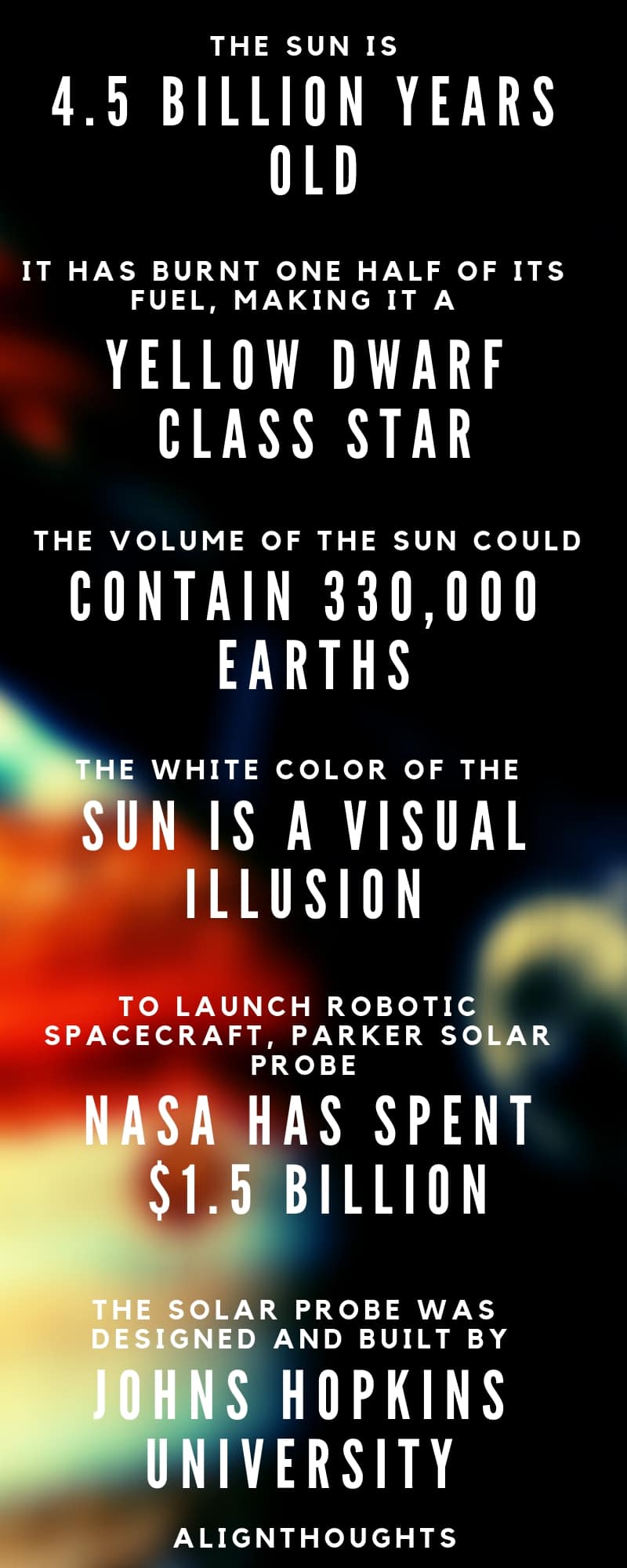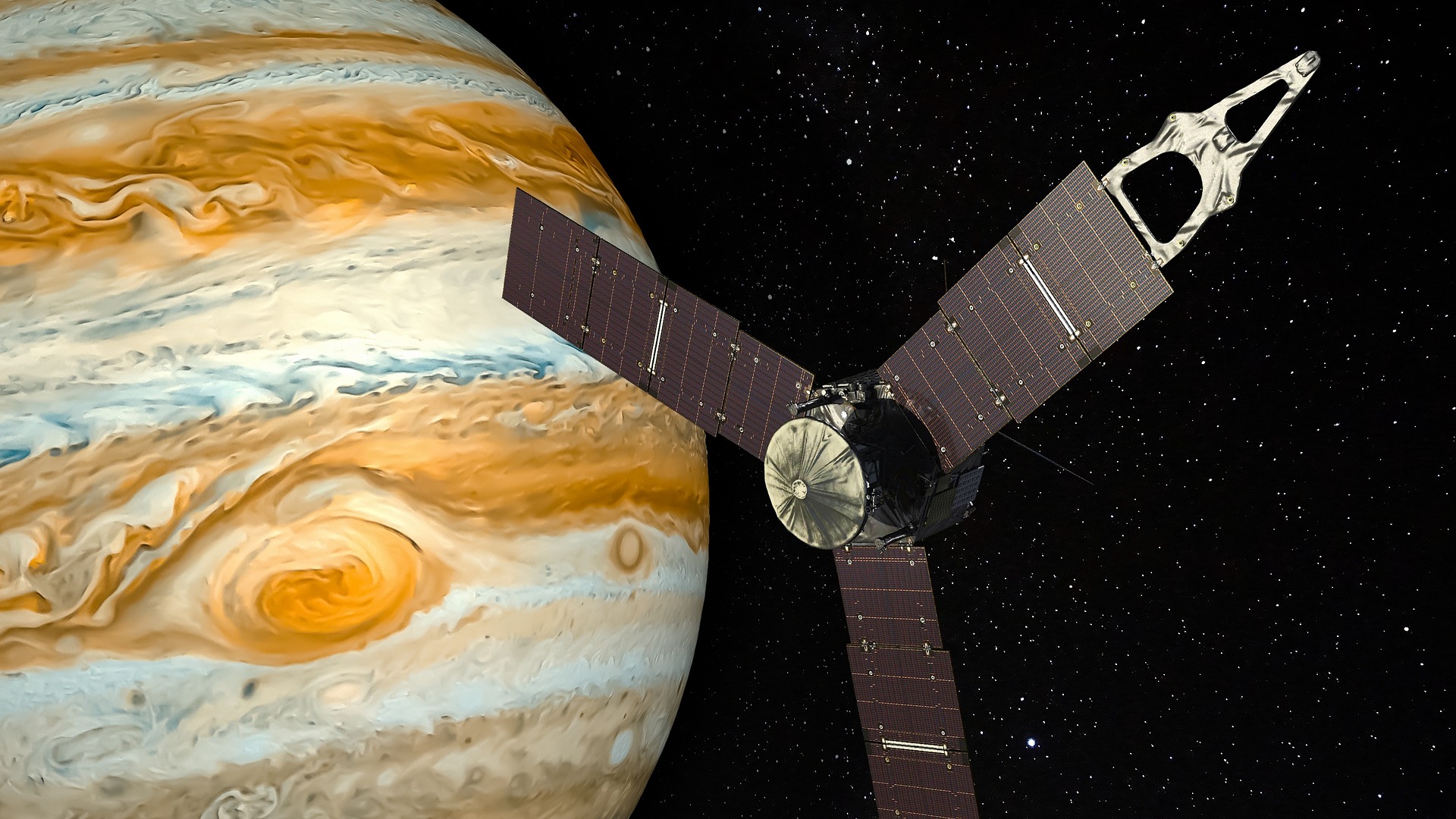Every morning we wake up certain of one thing: the sun is up in the sky, giving us light and warmth. The existence of the sun is, practically, the basic prerequisite for the existence of life on Earth, in all its form. For generations, we have taken it for granted. A famous novel by Ernst Hemingway has a title that expresses our innermost conviction: “The Sun Also Rises”.
Along the millennia, human civilization thrived and developed under the benign gaze of the sun. Certain civilizations worshipped it. Others created gods which govern the existence and apparent movement of the sun. Now, in the 21st century, scientists want to answer a burning question:
What exactly is happening within and at the surface of the sun?
To answer this question, NASA has spent years and $1.5 billion to create an advanced space probe capable of flying up to the sun and studying its incredibly hot surface.
This is the Parker Solar Probe, a robotic spacecraft launched on August 12, 2018, and programmed to operate continuously until the end of 2025.
What We Already Know about the Sun

While Parker Solar Probe will boldly go where no one has gone before, down here on Earth we already have lots of salient facts about the star at the center of our solar system. Here are some key facts about the Sun:
- The sun has reached the middle of its life. It is 4.5 billion years and has burnt approximately one half of its fuel, making it a Yellow Dwarf class star.
- The temperature inside the sun is generated by nuclear fusion and can reach 15 million degrees Celsius (27 million degrees Fahrenheit). At its surface, the temperature is 5,500 degrees Celsius (over 9,900 degrees Fahrenheit).
- The sun consists of 28% helium and a massive 70% hydrogen.
- It is a nearly perfect sphere with the diameter of 1,392,684 km (865,373 miles).
- The volume of the sun could contain 330,000 Earths.
- The white color of the sun is a visual illusion – in fact, it contains all the colors in the spectrum.
- Its surface is constantly agitated by magnetic storms (seen on Earth as sunspots) and solar winds reaching a speed of up to 450 kilometers per second (280 miles per second).
It may look like we already know all there is to know about our sun. However, the inner mechanisms that keep it going are still a mystery to scientists. They cannot be discovered from the average distance of 149,598,262 km (92,956,050 miles) separating us from the sun, so Parker Solar Probe will go there to have a closer look and relay its key findings back on Earth.
All You Need to Know about the Parker Solar Probe, NASA’s Robotic Spacecraft

The Mission of Parker Solar Probe
NASA prepared this project having three scientific objectives in mind:
- To trace the energy flow that heats the corona of the sun and accelerates the solar wind;
- To determine the structure and the dynamics of the sources of the solar wind, that is, the magnetic fields;
- To determine the mechanisms accelerating and transporting energetic particles.
The name of the robotic spacecraft comes from astrophysicist Eugene Parker, the first person who identified the supersonic stream of particles known as the solar wind. This is the first NASA spacecraft named after a living person.
And it will also be the first time a manmade object will get so close to the sun: the Parker Solar Probe is programmed to reach an altitude of 6.16 million kilometers 3.8 million miles) above the surface of the sun.
How To Win At Evolution And Survive The 6th Mass Extinction?
What Is Exactly the Parker Solar Probe?
The sun explorer which has recently started its mission is a robotic (unmanned) spacecraft.
The solar probe was designed and built by Johns Hopkins University Applied Physics Laboratory.
The Parker Solar Probe in numbers:
- 3 meters (9.8 feet) height;
- 2.3 meters (7.5 feet)maximum diameter;
- 1 meter (3.2 feet) bus diameter;
- 658 kilograms (1,450 pounds) maximum launch wet mass;
- 167 kb/s science downlink rate.
Speaking of key components, the robotic spacecraft launched by NASA consists of:
- The thermal shield – its role is to protect the entire device from the high temperatures of the corona of the sun. It is made of carbon-carbon composite, it is 2.4 meters (8 feet) wide and 11.4 centimeters (4.5 inches) thick and was designed to withstand temperatures of up to 1,370 degrees Celsius (2,498 degrees Fahrenheit)
- The solar-probe cup – this instrument will measure the speed, density, and temperature of solar winds
- The solar panels – these are the power generators of Parker Solar Probe, keeping it operative
- The wide-field imager – this super sophisticated camera will send images of the solar corona and the solar winds back to Earth
- The charged-particle detector – this instrument will measure the origin, speed, and movement of particles.
Here’s All You Need To Know About The NASA’s Mission To Reach Sun
Project scientist Nicola Fox, who was involved in the design and construction of Parker Solar Probe, explained the concept: “Most of the instruments sit on the main body of the spacecraft and are well in the shadow provided by the heat shield. […] Once we run out of fuel, the spacecraft will start to turn, and at that point, parts of the body that are not designed to see the full solar environment will then melt.”
The designers also installed a memory card on a plaque placed below the high gain antenna of the spacecraft. It contains the name of over 1.1 million people, together with photos of Eugene Parker and a copy of his 1958 scientific paper where he detailed important aspects of the physics of the sun.
Key Milestones for the Parker Solar Probe
The Parker Solar Probe will reach the sun using a complex trajectory which is calculated based on gravity assist. This means that the robotic spacecraft will get close to another planet and use its gravity to either slow down or speed up. NASA selected Venus as the adequate planet to provide Parker Solar Probe with gravity assist.
In this situation, the projected trajectory of the robotic spacecraft will be a series of elliptical orbits between Venus and the sun. A total of seven Venus flybys are on schedule and 26 perihelion approaches of the sun.
Key dates for Parker Solar Probe are:
- October 2, 2018 – first Venus flyby;
- November 5, 2018 – first solar flyby;
- December 19, 2024 – first closest sun approach;
- December 12, 2025 – the end of the mission.
At this moment, the robotic spacecraft has reached its first milestone. On October 3 it has performed the first Venus flyby, reaching as close as 2,400 kilometers (1,500 miles) of Venus in order to decrease its speed and modify its orbit bringing it closer to the sun. The first scientific observations should reach us in December 2018.
What do you think of the mission of Parker Solar Probe? Will the data we receive from it help us understand the way our planet relates to the sun and what we can expect in the future in terms of solar activity?


